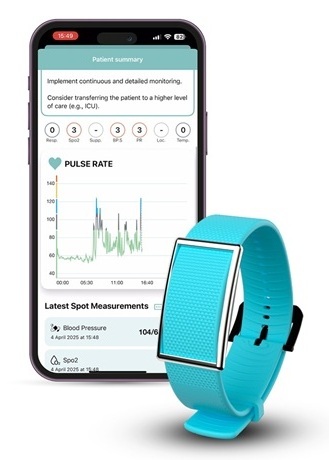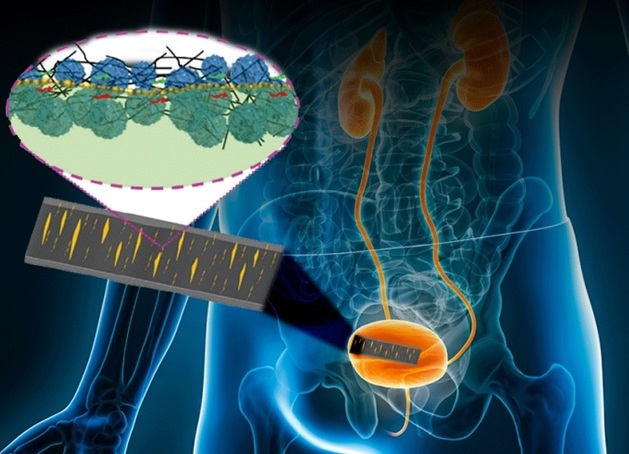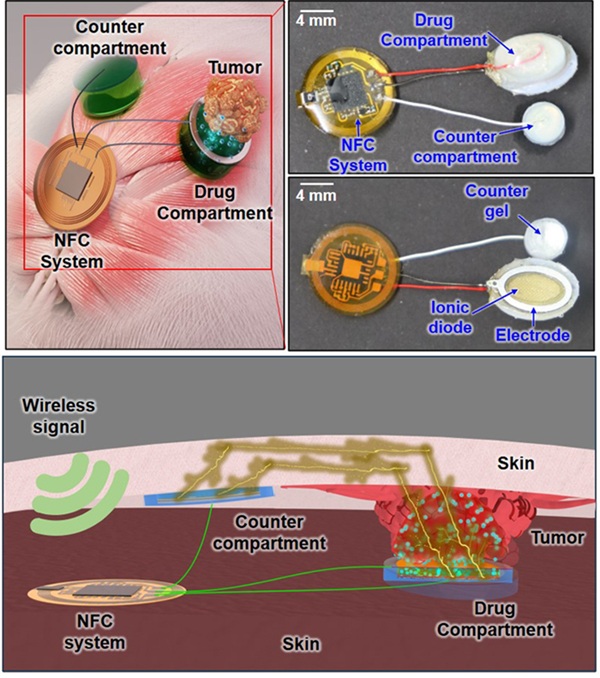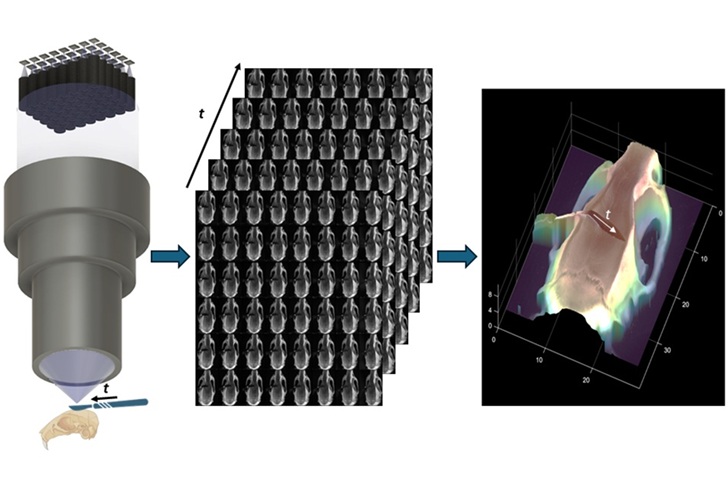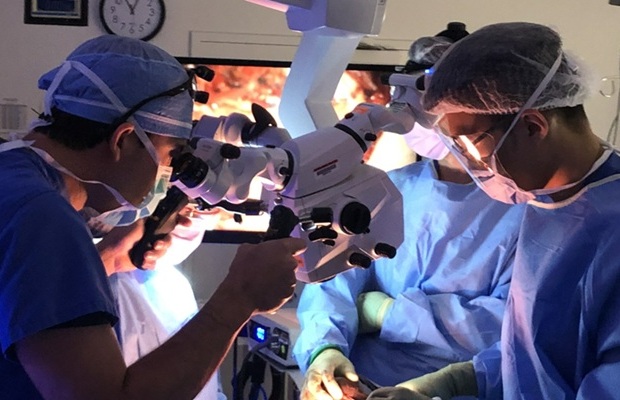AI Tool Helps Make Real-Time Diagnosis During Surgery
|
By HospiMedica International staff writers Posted on 26 Dec 2022 |

When a patient undergoes a surgical operation to remove a tumor or treat a disease, the course of surgery is often not predetermined. To decide how much tissue needs to be removed, surgeons must know more about the condition they are treating, including a tumor’s margins, its stage and whether a lesion is malignant or benign - determinations that often hinge upon collecting, analyzing, and diagnosing a disease while the patient is on the operating table. When surgeons send samples to a pathologist for examination, both speed and accuracy are of the essence. The current gold-standard approach for examining tissues often takes too long and a faster approach, which involves freezing tissue, can introduce artifacts that can complicate diagnostics. Now, researchers have developed a new method that leverages artificial intelligence to translate between frozen sections and the gold-standard approach, thereby improving the quality of images to increase the accuracy of rapid diagnostics.
For making final diagnoses, pathologists use formalin-fixed and paraffin-embedded (FFPE) tissue samples - this method preserves tissue in a way that produces high-quality images but the process is laborious and typically takes 12 to 48 hours. For a rapid diagnosis, pathologists use an approach known as cryosectioning that involves fast freezing tissue, cutting sections, and observing these thin slices under a microscope. Cryosectioning takes minutes rather than hours but can distort cellular details and compromise or tear delicate tissue. Researchers at the Brigham and Women’s Hospital (Boston, MA, USA) have developed a deep-learning model that can be used to translate between frozen sections and more commonly used FFPE tissue. The team demonstrated that the method could be used to subtype different kinds of cancer, including glioma and non-small-cell lung cancer.
The researchers validated their findings by recruiting pathologists to a reader study in which they were asked to make a diagnosis from images that had gone through the AI method and traditional cryosectioning images. The AI method not only improved image quality but also improved diagnostic accuracy among experts. The algorithm was also tested on independently collected data from Turkey. The researchers note that in the future, prospective clinical studies should be conducted to validate the AI method and determine if it can contribute to diagnostic accuracy and surgical decision-making in real hospital settings.
“We are using the power of artificial intelligence to address an age-old problem at the intersection of surgery and pathology,” said corresponding author Faisal Mahmood, PhD, of the Division of Computational Pathology at BWH. “Making a rapid diagnosis from frozen tissue samples is challenging and requires specialized training, but this kind of diagnosis is a critical step in caring for patients during surgery.”
“Our work shows that AI has the potential to make a time-sensitive, critical diagnosis easier and more accessible to pathologists,” said Mahmood. “And it could potentially be applied to any type of cancer surgery. It opens up many possibilities for improving diagnosis and patient care.”
Related Links:
Brigham and Women’s Hospital
Latest Surgical Techniques News
- Fluorescent Imaging Agent ‘Lights Up’ Nerves for Better Visualization During Surgery
- LED-Based Imaging System Could Transform Cancer Detection in Endoscopy
- New Surgical Microscope Offers Precise 3D Imaging Using 48 Tiny Cameras
- First-Of-Its-Kind Drug Illuminates Nerve Tissue for Faster and Safer Surgery
- Neuroform Atlas Stent-Assisted Coiling Found Effective Even in Smaller Arteries
- New Surgical Technique Safely Removes Giant Nerve Tumors
- Breakthrough Polymer Significantly Improves Safety of Implantable Medical Devices
- First-Ever Technology Makes Blood Translucent During Surgery
- Tibia Nailing System with Novel Side-Specific Nails to Revolutionize Fracture Surgery
- New Imaging Probe to Transform Brain Cancer Surgery
- New Technology More Than Doubles Success Rate for Blood Clot Removal
- Surgical Ablation During CABG Improves Survival in Patients with Preexisting Atrial Fibrillation
- New Battery Technology Delivers Additional Power to Implantable Medical Devices

- New Model Reveals Optimal Positioning of Orthopedic Screws in Fractures
- Non-Invasive Tool for Removing Lung Cancer Tumors Reduces Surgical Trauma
- Advanced Imaging Endoscopes to Revolutionize Detection and Treatment of Gastrointestinal Disorders
Channels
Critical Care
view channel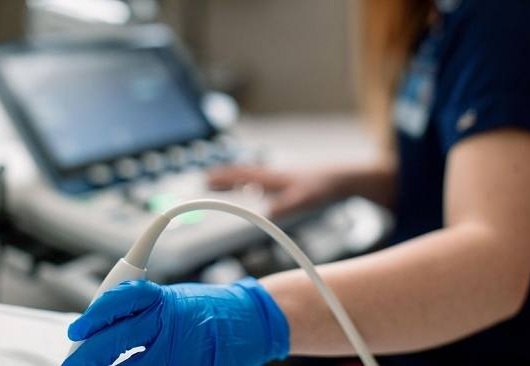
AI-Enhanced Echocardiography Improves Early Detection of Amyloid Buildup in Heart
Cardiac amyloidosis is a life-threatening condition where an abnormal protein called amyloid builds up in the heart, causing it to stiffen and lose functionality. The disease is often missed because its... Read more
Consumer Wearables Could Predict Pediatric Surgery Complications
An estimated 4 million children undergo surgical procedures in U.S. hospitals each year. Postoperative complications, such as infections, can pose significant health risks to children, and timely detection... Read moreSurgical Techniques
view channel
Fluorescent Imaging Agent ‘Lights Up’ Nerves for Better Visualization During Surgery
Surgical nerve injury is a significant concern in head and neck surgeries, where nerves are at risk of being inadvertently damaged during procedures. Such injuries can lead to complications that may impact... Read more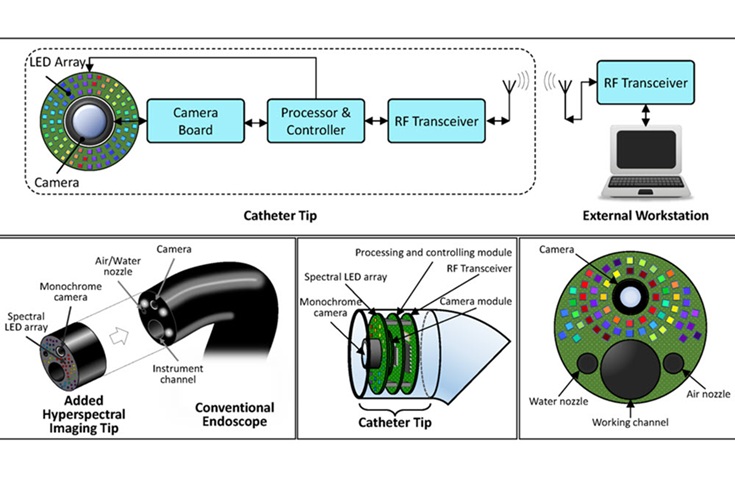
LED-Based Imaging System Could Transform Cancer Detection in Endoscopy
Gastrointestinal cancers remain one of the most common and challenging forms of cancer to diagnose accurately. Despite the widespread use of endoscopy for screening and diagnosis, the procedure still misses... Read morePatient Care
view channel
Revolutionary Automatic IV-Line Flushing Device to Enhance Infusion Care
More than 80% of in-hospital patients receive intravenous (IV) therapy. Every dose of IV medicine delivered in a small volume (<250 mL) infusion bag should be followed by subsequent flushing to ensure... Read more
VR Training Tool Combats Contamination of Portable Medical Equipment
Healthcare-associated infections (HAIs) impact one in every 31 patients, cause nearly 100,000 deaths each year, and cost USD 28.4 billion in direct medical expenses. Notably, up to 75% of these infections... Read more
Portable Biosensor Platform to Reduce Hospital-Acquired Infections
Approximately 4 million patients in the European Union acquire healthcare-associated infections (HAIs) or nosocomial infections each year, with around 37,000 deaths directly resulting from these infections,... Read moreFirst-Of-Its-Kind Portable Germicidal Light Technology Disinfects High-Touch Clinical Surfaces in Seconds
Reducing healthcare-acquired infections (HAIs) remains a pressing issue within global healthcare systems. In the United States alone, 1.7 million patients contract HAIs annually, leading to approximately... Read moreHealth IT
view channel
Printable Molecule-Selective Nanoparticles Enable Mass Production of Wearable Biosensors
The future of medicine is likely to focus on the personalization of healthcare—understanding exactly what an individual requires and delivering the appropriate combination of nutrients, metabolites, and... Read more
Smartwatches Could Detect Congestive Heart Failure
Diagnosing congestive heart failure (CHF) typically requires expensive and time-consuming imaging techniques like echocardiography, also known as cardiac ultrasound. Previously, detecting CHF by analyzing... Read moreBusiness
view channel
Bayer and Broad Institute Extend Research Collaboration to Develop New Cardiovascular Therapies
A research collaboration will focus on the joint discovery of novel therapeutic approaches based on findings in human genomics research related to cardiovascular diseases. Bayer (Berlin, Germany) and... Read more